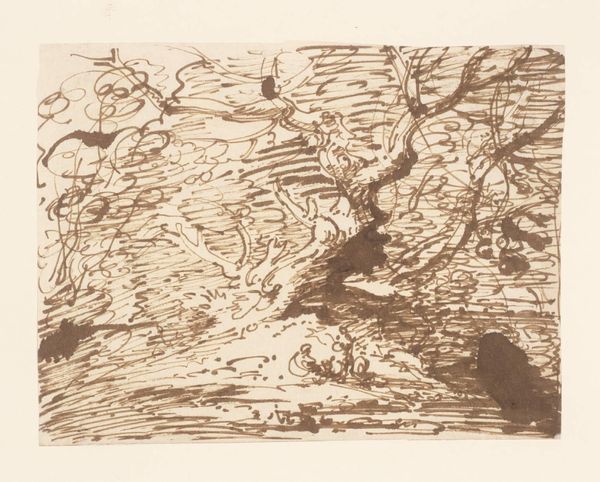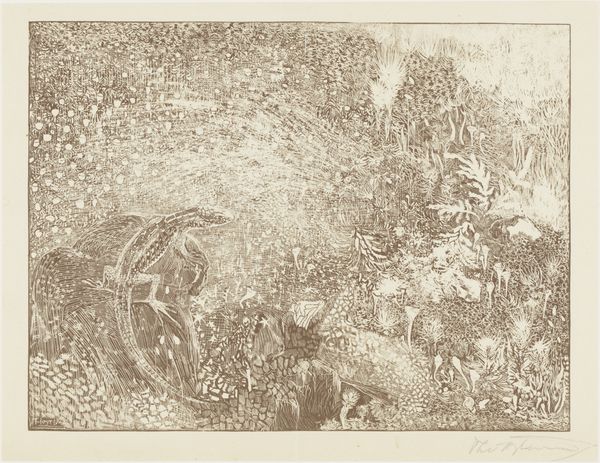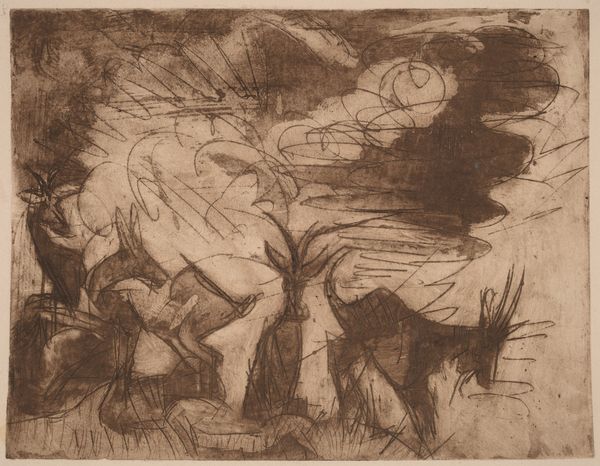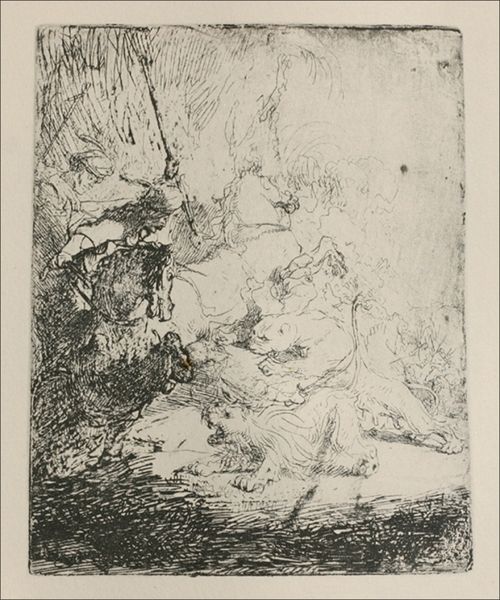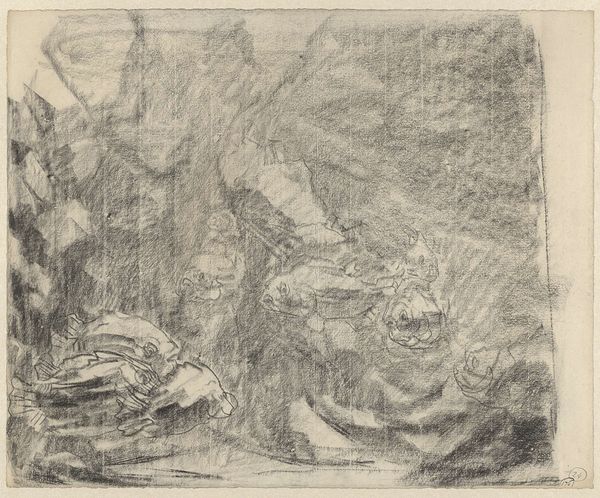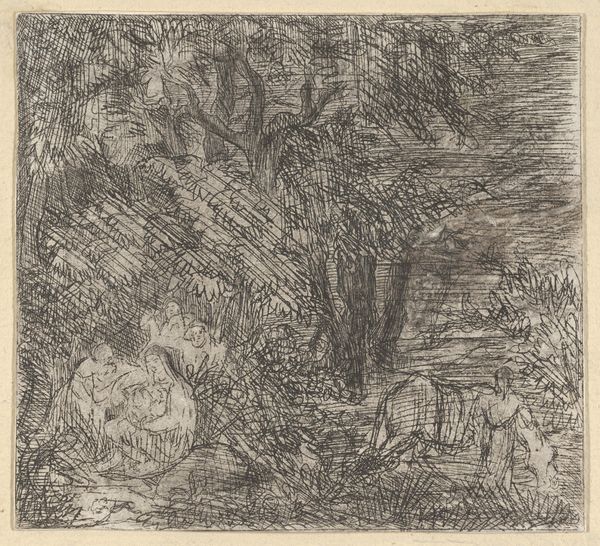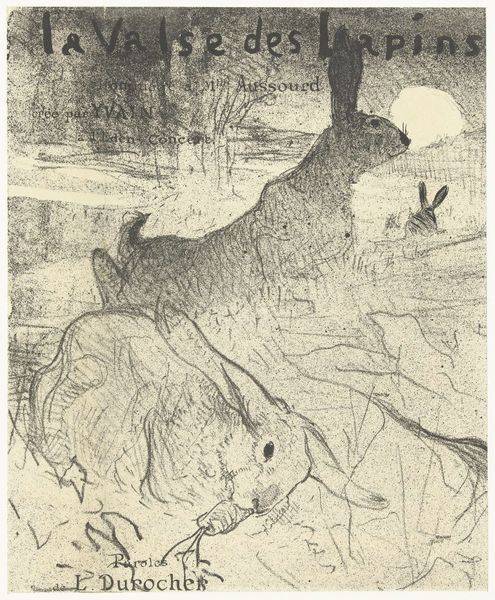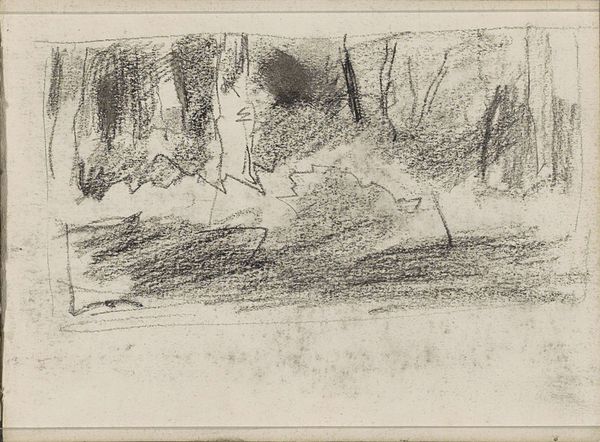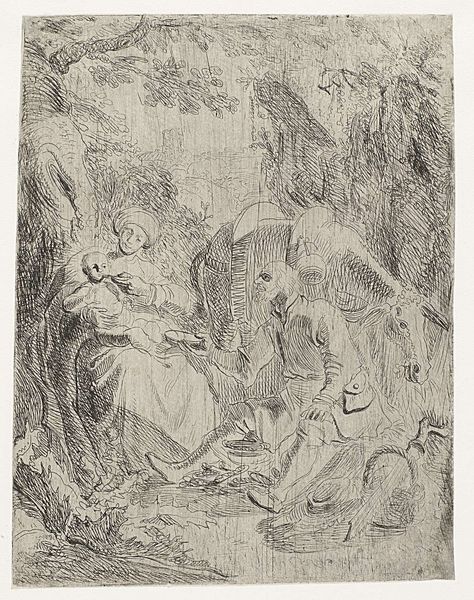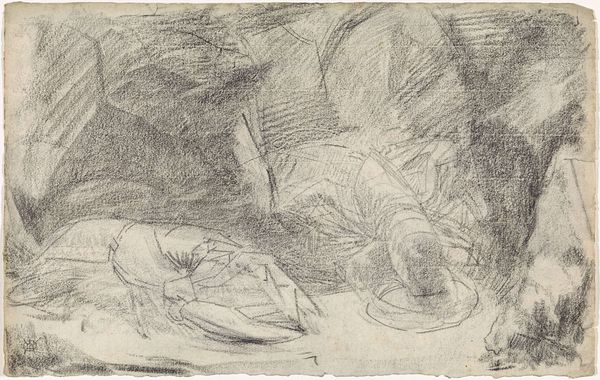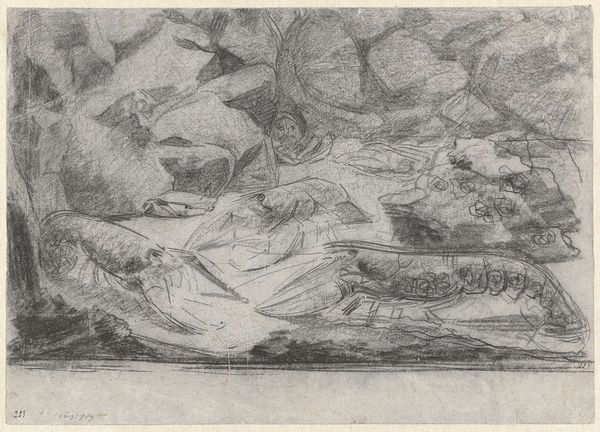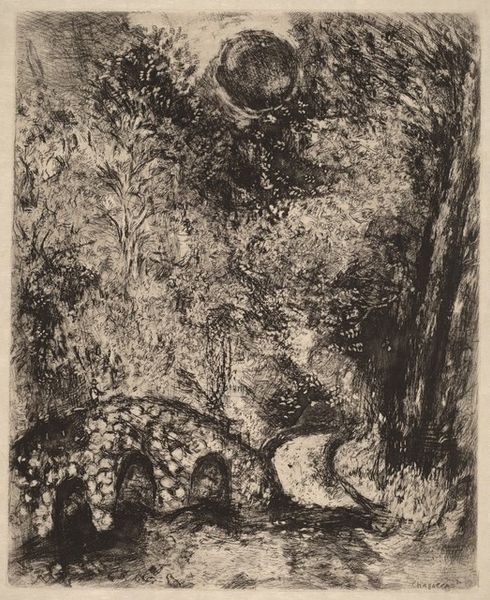
Sheet of Studies. Seated Woman and Heads of Women (Feuille d'études. Femme assise et têtes des femmes) 1934
0:00
0:00
drawing, print, etching, paper
#
portrait
#
drawing
#
cubism
# print
#
etching
#
pencil sketch
#
figuration
#
paper
Copyright: National Gallery of Art: CC0 1.0
Editor: This is "Sheet of Studies. Seated Woman and Heads of Women" by Pablo Picasso, made in 1934. It’s an etching on paper. The composition is quite dense; it’s hard to decipher the figures initially. How do you interpret this work, especially given the context of its creation? Curator: The apparent chaos is, in fact, a powerful commentary. In the 1930s, Picasso was wrestling with the rise of fascism and the looming threat of war. I see this "Sheet of Studies" as a reflection of that societal fragmentation. The multiple perspectives, the distorted figures... they mirror the fracturing of established social orders and the breakdown of traditional power structures. Do you notice how the figures seem trapped, almost imprisoned within the etching's dense lines? Editor: Yes, I see that now. It feels like there's a sense of unease and confinement. The figures don't seem to interact or connect. Curator: Exactly. And it's crucial to consider Picasso’s personal life at the time. His tumultuous relationship with his muse, Marie-Thérèse Walter, also contributes to this sense of inner turmoil reflected in the artwork. How might we interpret the multiple "heads of women" in relation to his personal relationships and the societal pressures of the era? Editor: It's interesting to consider his personal struggles and political views bleeding into his artwork, the chaos conveying feelings about society more broadly. Thanks for providing context about how it reflects larger struggles. Curator: Absolutely. Understanding that intersectionality, how personal experiences and historical events intertwine, allows us a richer, more nuanced appreciation of Picasso’s work and its lasting relevance.
Comments
No comments
Be the first to comment and join the conversation on the ultimate creative platform.
